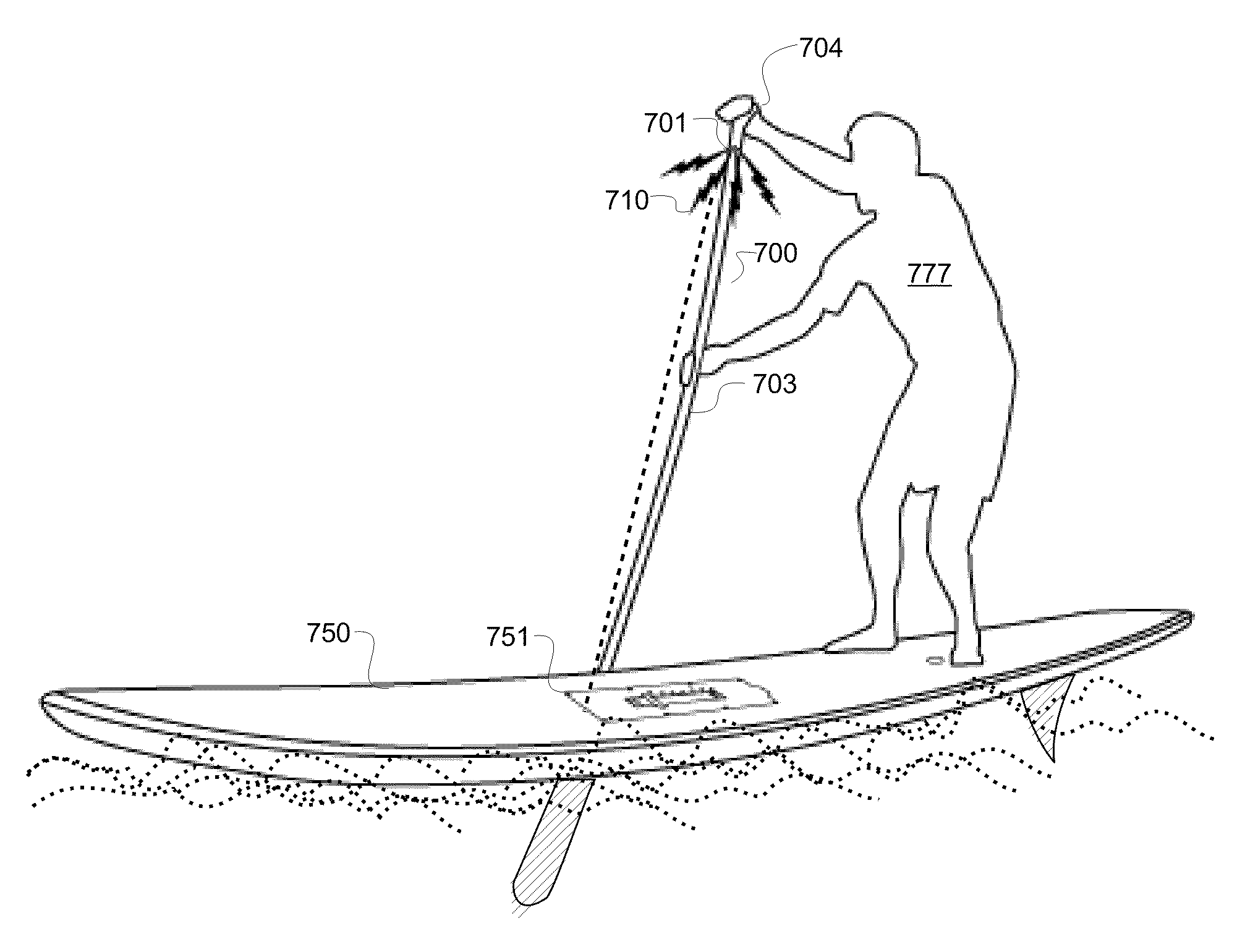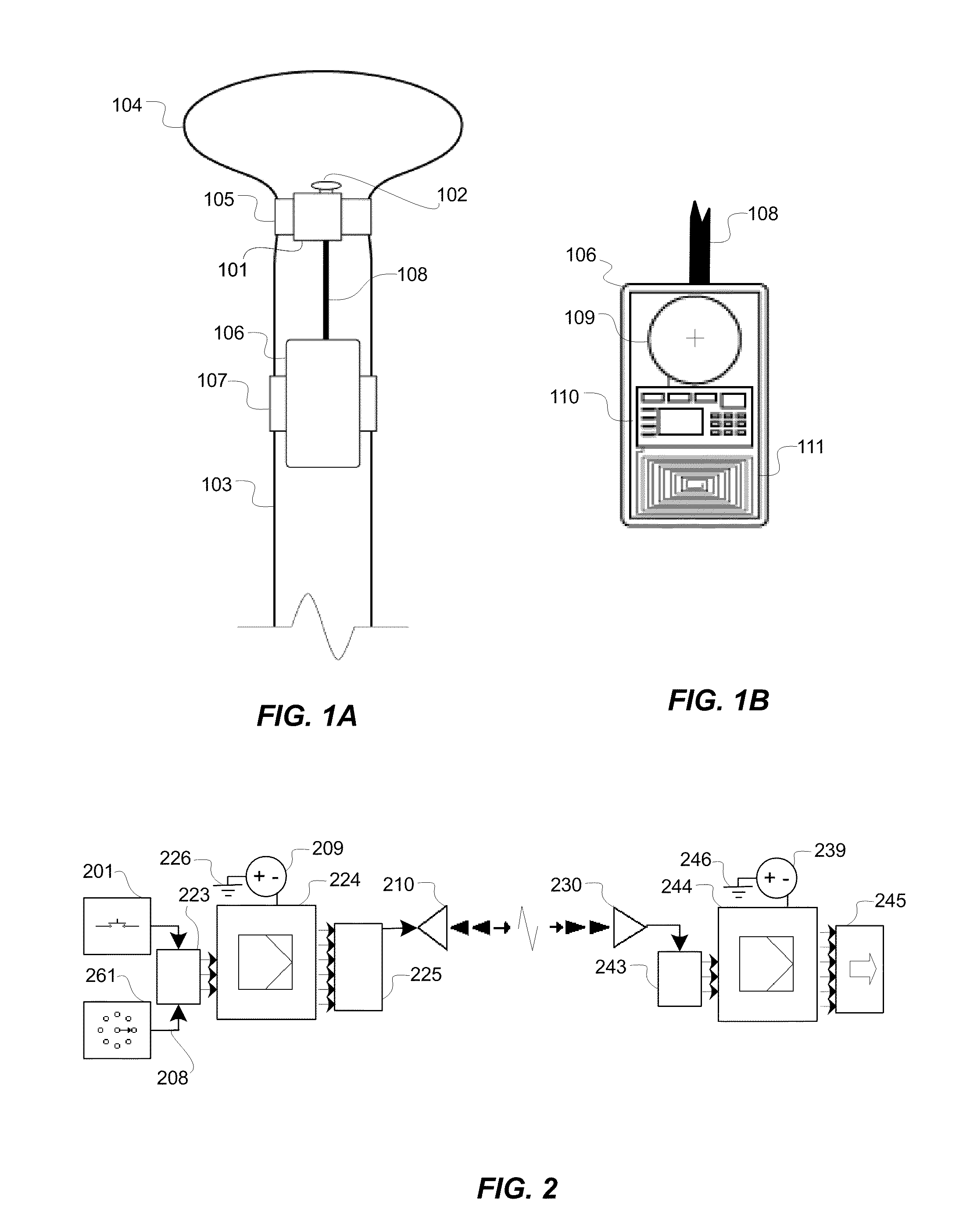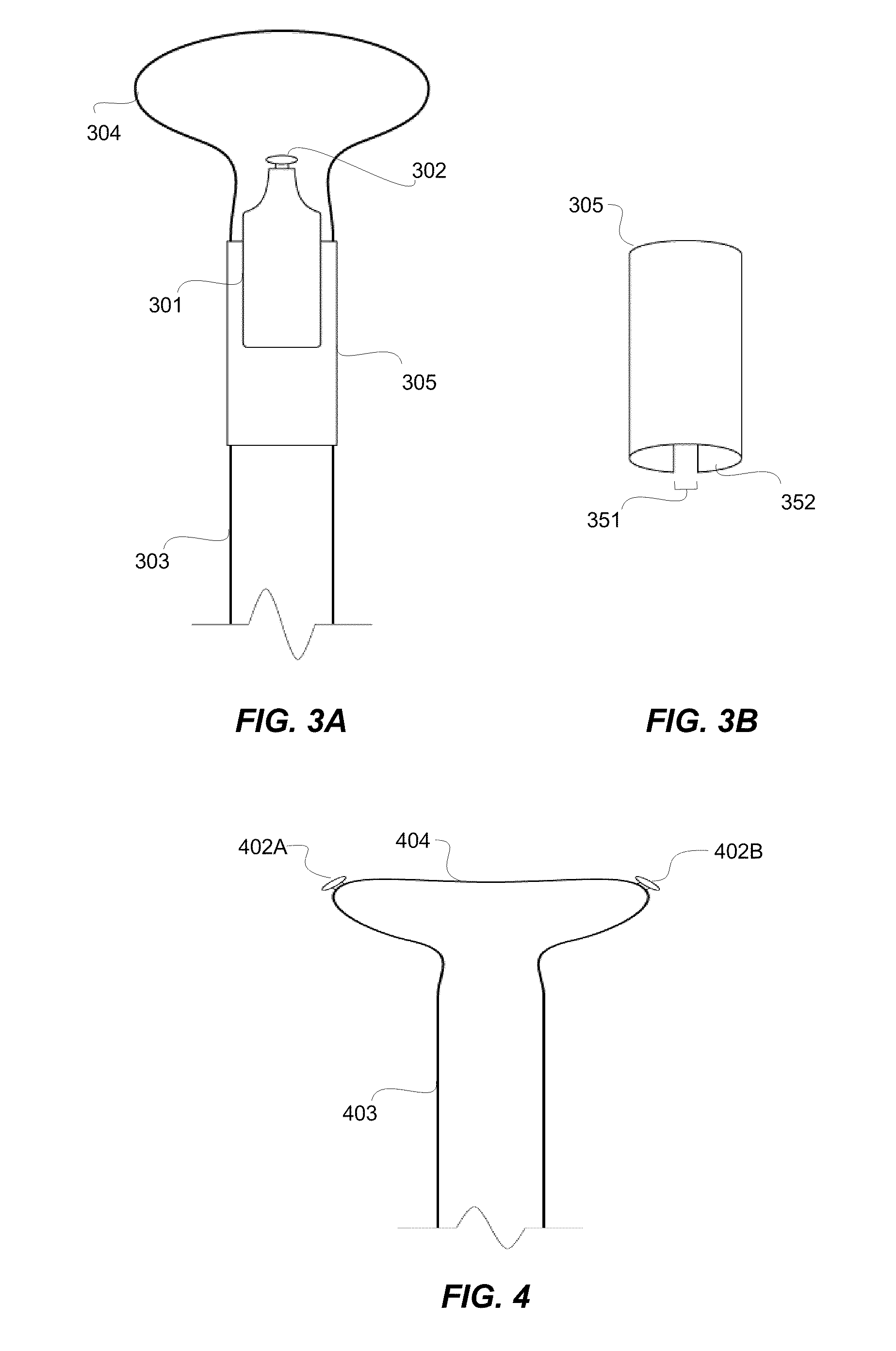Paddle-integrated wireless controller
a wireless controller and integrated technology, applied in the field of short-range wireless communication, can solve the problems of not being able to ship the paddle anywhere secure, unable to meet the needs of small watercraft, and other useful devices developed for dry land and larger vessels were once impractical for small watercra
- Summary
- Abstract
- Description
- Claims
- Application Information
AI Technical Summary
Benefits of technology
Problems solved by technology
Method used
Image
Examples
Embodiment Construction
A simple preferred embodiment includes a wireless transmitter and a suitable power supply (for example, one or more compact lightweight batteries such as “coin” or “button” cells) encapsulated in a waterproof transmitter housing and connected to respond to a waterproof “on / off” actuator. Both case and actuator are mounted on the shaft of a paddle near the grip. The actuator is positioned a few centimeters from an operator's normal hand position while paddling; easy to reach while continuing to use the paddle, but unlikely to be hit or grasped unintentionally. A receiver corresponding with the transmitter controls a propulsion-assist system (e.g., an electric motor). The operator starts the propulsion-assist by pushing or squeezing the actuator with part of the hand grasping the paddle grip. Releasing the switch returns it to its default position and causes the propulsion system to deactivate; this is a safety precaution in case the operator drops the paddle or some other disruption ...
PUM
| Property | Measurement | Unit |
|---|---|---|
| power | aaaaa | aaaaa |
| conductive | aaaaa | aaaaa |
| non-conductive | aaaaa | aaaaa |
Abstract
Description
Claims
Application Information
 Login to View More
Login to View More - R&D
- Intellectual Property
- Life Sciences
- Materials
- Tech Scout
- Unparalleled Data Quality
- Higher Quality Content
- 60% Fewer Hallucinations
Browse by: Latest US Patents, China's latest patents, Technical Efficacy Thesaurus, Application Domain, Technology Topic, Popular Technical Reports.
© 2025 PatSnap. All rights reserved.Legal|Privacy policy|Modern Slavery Act Transparency Statement|Sitemap|About US| Contact US: help@patsnap.com



